Ludolf Bakhuizen (1630 – 1708)
Get a Ludolf Bakhuizen (1630 – 1708) Certificate of Authenticity for your painting (COA) for your Ludolf Bakhuizen (1630 – 1708) drawing.
For all your Ludolf Bakhuizen (1630 – 1708) artworks you need a Certificate of Authenticity (COA) in order to sell, to insure or to donate for a tax deduction.
Getting a Ludolf Bakhuizen (1630 – 1708) Certificate of Authenticity (COA) is easy. Just send us photos and dimensions and tell us what you know about the origin or history of your Ludolf Bakhuizen (1630 – 1708) painting or drawing.
If you want to sell your Ludolf Bakhuizen (1630 – 1708) painting or drawing use our selling services. We offer Ludolf Bakhuizen (1630 – 1708) selling help, selling advice, private treaty sales and full brokerage.
We have been authenticating Ludolf Bakhuizen (1630 – 1708) and issuing certificates of authenticity since 2002. We are recognized Ludolf Bakhuizen (1630 – 1708) experts and Ludolf Bakhuizen (1630 – 1708) certified appraisers. We issue COAs and appraisals for all Ludolf Bakhuizen (1630 – 1708) artworks.
Our Ludolf Bakhuizen (1630 – 1708) paintings and drawings authentications are accepted and respected worldwide.
Each COA is backed by in-depth research and analysis authentication reports.
The Ludolf Bakhuizen (1630 – 1708) certificates of authenticity we issue are based on solid, reliable and fully referenced art investigations, authentication research, analytical work and forensic studies.
We are available to examine your Ludolf Bakhuizen (1630 – 1708) painting or drawing anywhere in the world.
You will generally receive your certificates of authenticity and authentication report within two weeks. Some complicated cases with difficult to research Ludolf Bakhuizen (1630 – 1708) paintings or drawings take longer.
Our clients include Ludolf Bakhuizen (1630 – 1708) collectors, investors, tax authorities, insurance adjusters, appraisers, valuers, auctioneers, Federal agencies and many law firms.
We perform Ludolf Bakhuizen art authentication, appraisal, certificates of authenticity (COA), analysis, research, scientific tests, full art authentications. We will help you sell your Ludolf Bakhuizen or we will sell it for you.
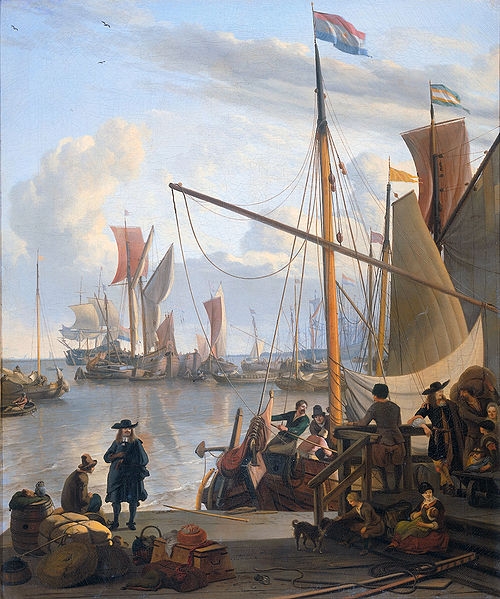
Amsterdam viewed from Mussel Pier, 1673
Oil on canvas 81 x 67 cm (31.89 x 26.38 in)
Rijksmuseum
Ludolf Backhuizen was a German painter, born in Emden, East Frisia. Backhuizen moved to Amsterdam in 1650, and became one of the foremost painters of the Dutch Golden Age.

Ships Running around in a Storm, 1690s
Oil on canvas
173.5 x 341 cm
Musees Royaux des Beaux-Arts, Brussels
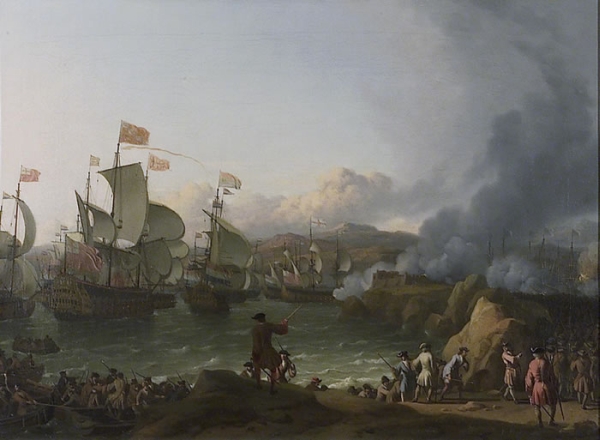
Battle of Vigo Bay, 1702
oil on canvas
When Backhuizen first arrived in Amsterdam he worked as a calligrapher and a merchant clerk. Backhuizen soon realized his talent and passion for painting and by the late 1650s he devoted himself to the arts. Backhuizen’s interest in art began with a series of ink drawings that later transpired into etchings and paintings. Backhuizen formally studied under Allart van Everdingen and Hendrik Dubbels, who were both known as Dutch masters.
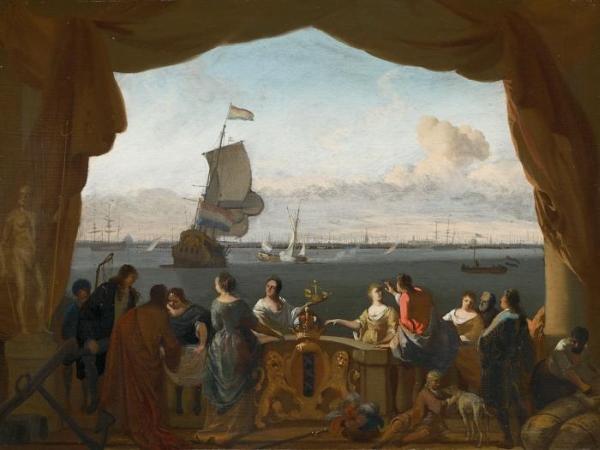
Allegory from Amsterdam
Oil on Canvas 23.5 x 31.5 cm
Amsterdam Historic Museum
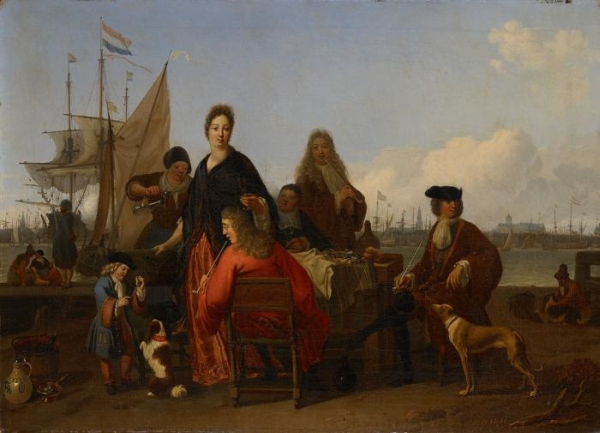
The Family of Backhuizen, 1702
Oil on canvas 50 x 69 cm
Amsterdam Historic Museum
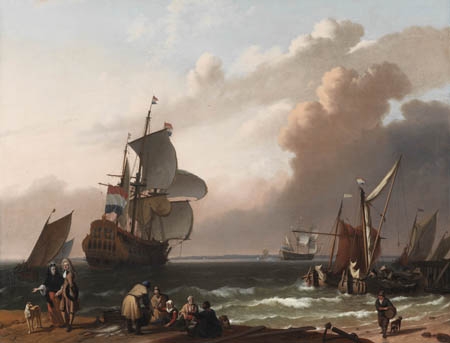
Coastal Scene with a Man of War and other Vessels, 1693
Oil on canvas 85.4 x 110.5 cm
Detroit Institute of Arts

A Shipwreck, 1653-1660
Oil on canvas (29.4 x 37.7 cm)
Fitzwilliam Museum
Backhuizen soon became known for his maritime scenes, painting rough seas and warships. In order to study the sea, Backhuizen would sail in an open boat, observing the movement of waves during storms. While Backhuizen is most known for his ship paintings, he also rendered portraits, genre paintings and landscapes.
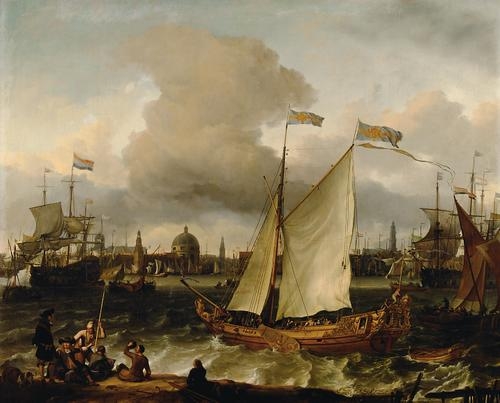
Swedish Yacht (Lejonet) before Amsterdam, 1674
Oil on canvas 170 x 210 cm
Kunsthistorisches Museum, Vienna

Warships and Small Ships in Breeze, 1665
Oil on canvas 42.5 x 50.3 cm
Kunsthistorisches Museum, Vienna

The Arrival of Prince Willem III on January 31, 1691-1692
Oil on canvas 53.5 x 67.5 cm
Mauritshuis Collection
Backhuizen reputation’s spread throughout Europe and led him to meet historical figures such Cosimo III de Medici and Peter the Great. He returned to Germany on several occasions where he painted for the court. Despite his many travels, Backhuizen kept his base in Amsterdam, where he opened a gallery in the town hall.
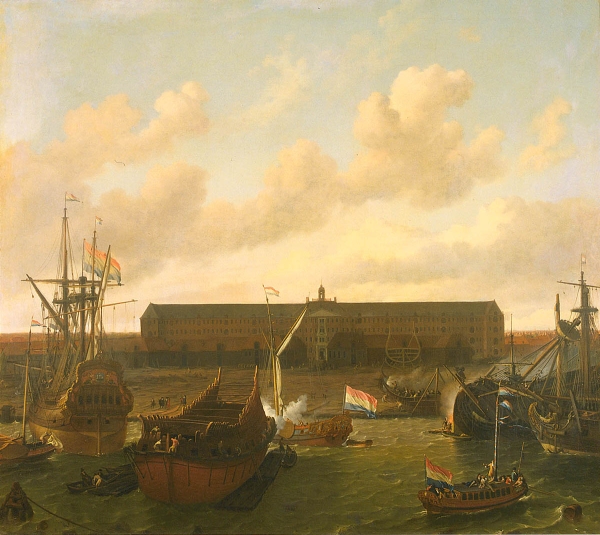
The United East Indian Company in Amsterdam, 1696
Oil on Canvas 126 x 140 cm
Mauritshuis Collection
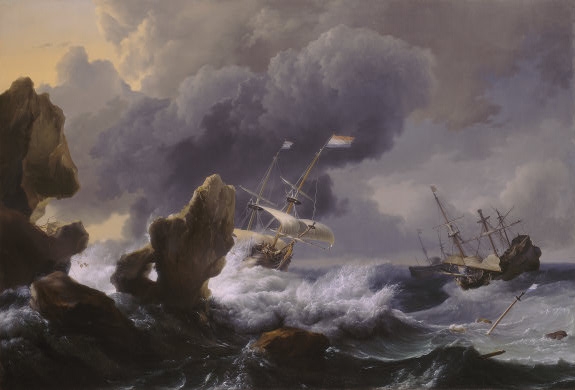
Ships in Distress off a Rocky Coast, 1667
Oil on canvas
Ailsa Mellon Bruce Fund
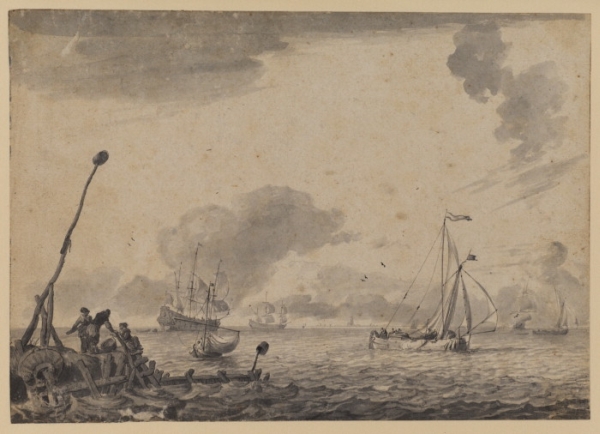
Seascape Shipping Off the Coast, 1664
Pen and Ink 16.7 x 23.5 cm
Courtauld Institute of Art

Shipping off a Coast, 17th century
Pen and Ink Brown 15.8 x 22.7 cm
Courtauld Institute of Art
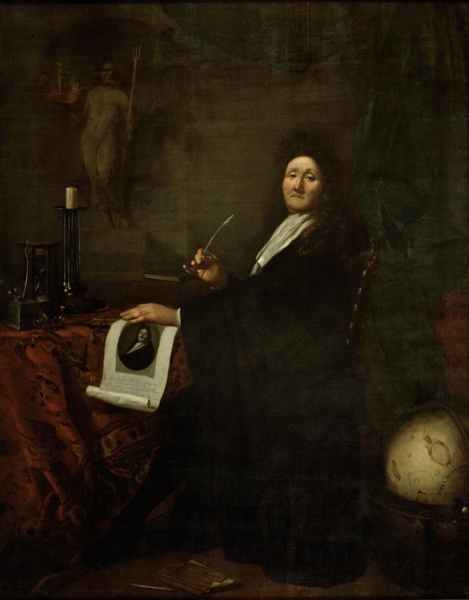
Self-Portrait, 1699
Oil on canvas 187 x 150 cm
Amsterdam Historic Museum
Reviews
1,217 global ratings
5 Star
4 Star
3 Star
2 Star
1 Star
Your evaluation is very important to us. Thank you.
